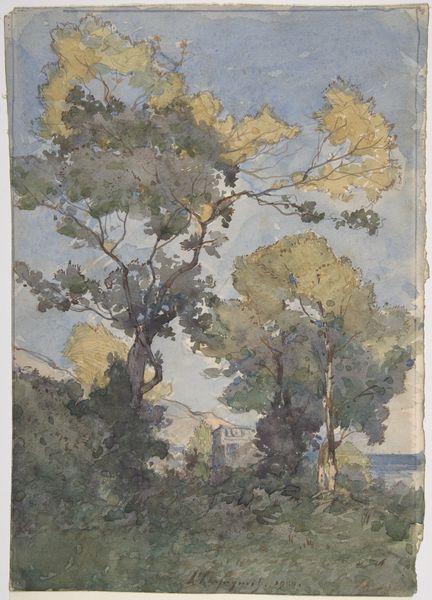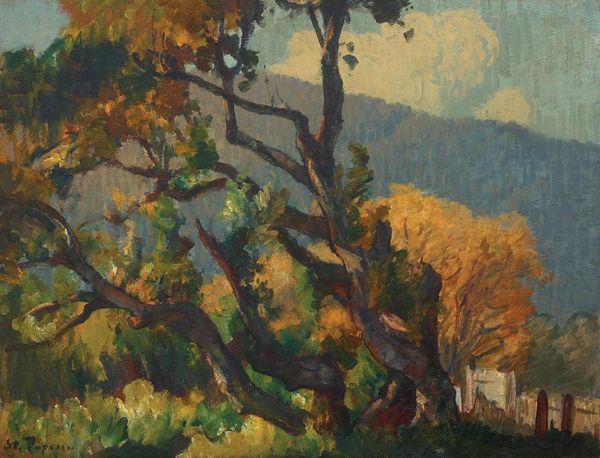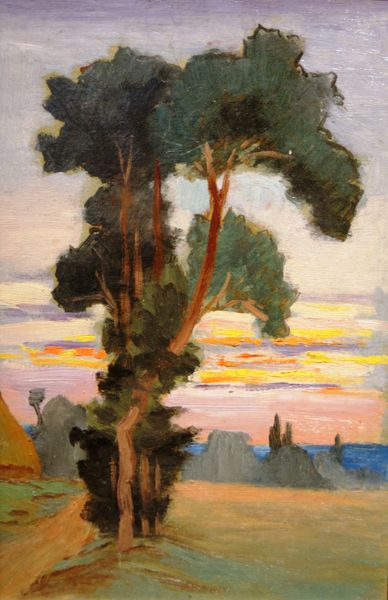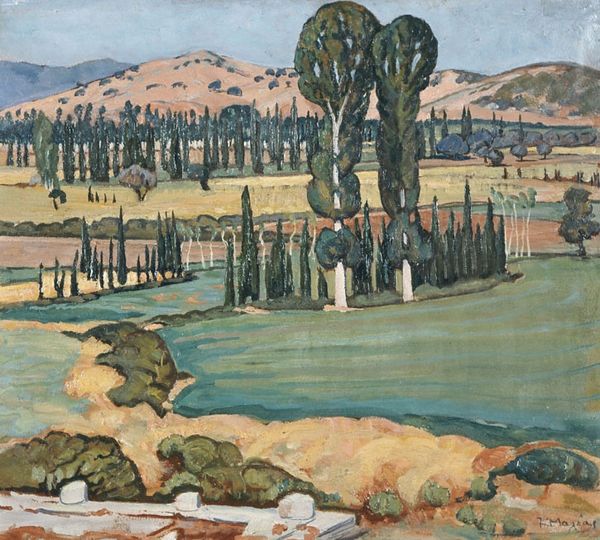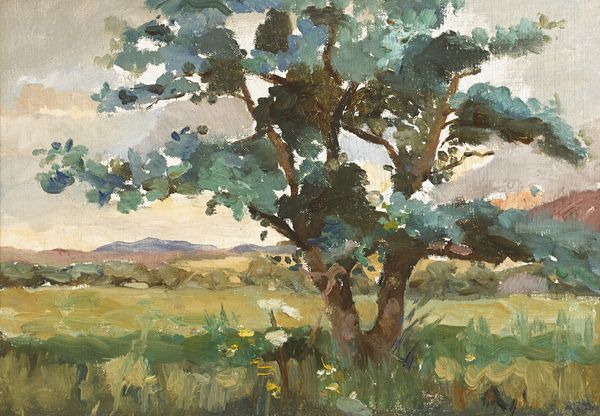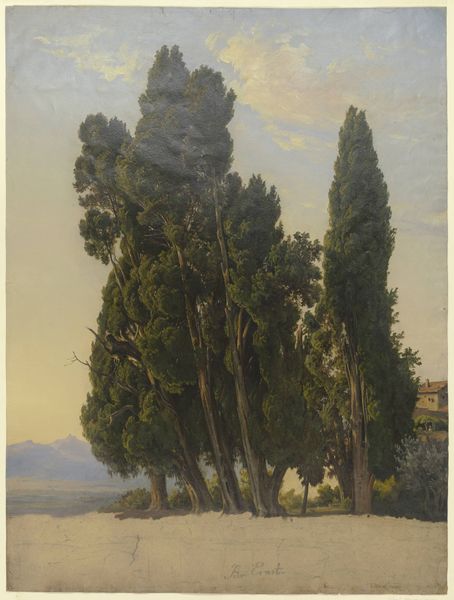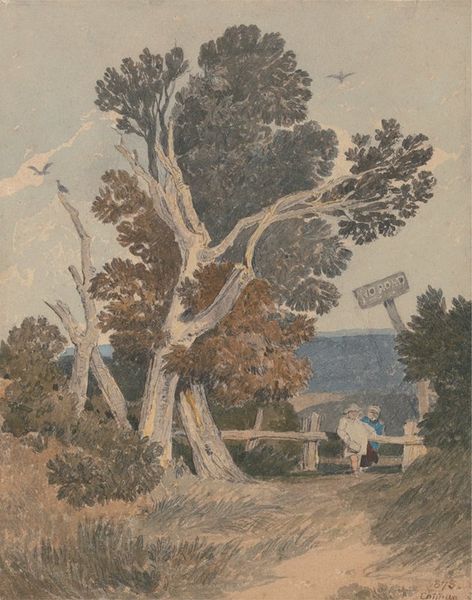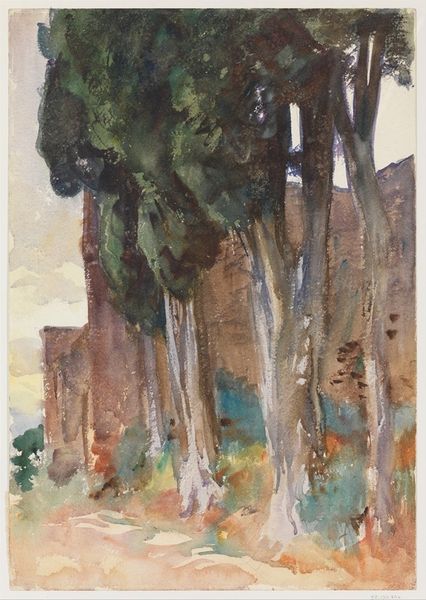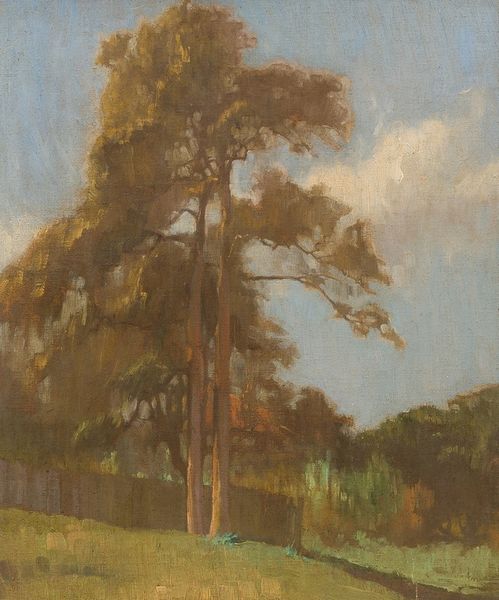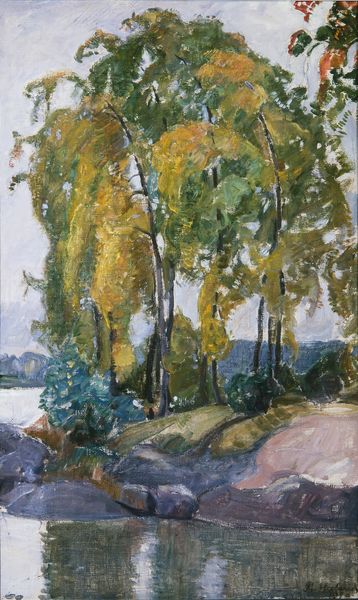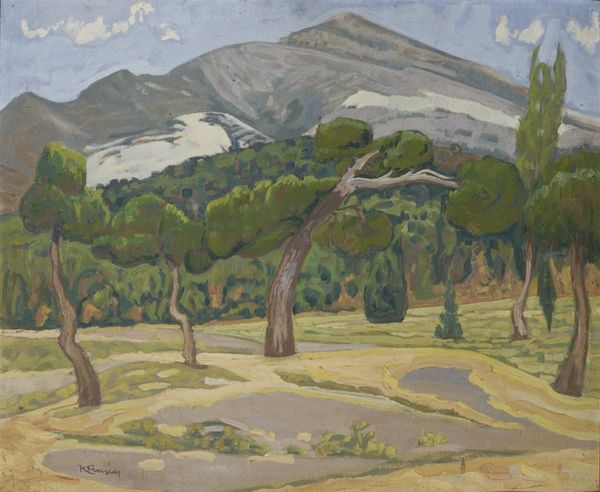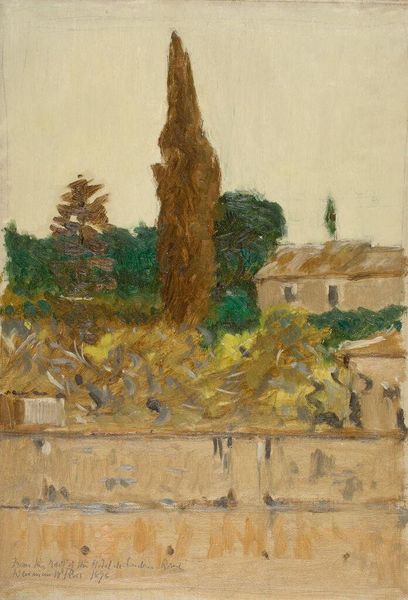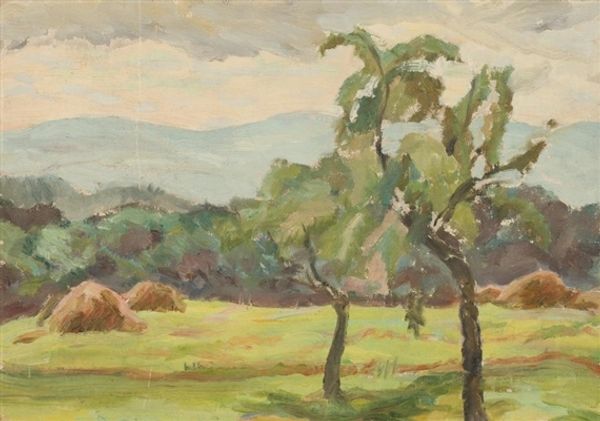
painting, oil-paint
#
painting
#
oil-paint
#
landscape
#
oil painting
#
realism
Copyright: Public domain
Editor:"Low Country Cottonwood," painted by Maynard Dixon in 1940 using oil on canvas. The towering cottonwood seems so resilient, standing there against the stark landscape, as if guarding something. How do you read the symbols at play in this painting? Curator:Consider how trees, particularly in arid landscapes like this, become symbols of life and endurance. This lone cottonwood against the seemingly infinite horizon may represent more than just nature, doesn’t it? It could be an echo of indigenous beliefs connecting the terrestrial and the celestial, wouldn't you say? Editor:That’s fascinating. So the cottonwood becomes a sort of pillar between worlds? Curator:Precisely. Dixon, deeply inspired by the American West, may be drawing on the deep cultural well of Native American symbology, suggesting resilience in a harsh land. And the shack almost nestled beneath it? Is it shelter, history, fragility or perhaps something else? How does that impact how you see this? Editor:I see what you mean! The little shack feels temporary in comparison to the tree, as though it depends entirely upon the Cottonwood for its existence. I wonder, in placing these specific objects, what was Dixon really saying about the American West? Curator:A fascinating question! Perhaps it speaks to a dialogue between the enduring spirit of nature and the temporary presence of human structures and civilizations. Think about the colors, too. That blue-grey haze in the distance feels so familiar, doesn't it? It almost conveys the distance between hope and memory. Editor:Wow, I never thought of it like that. Seeing those interconnected themes enriches the way I look at the painting completely! Thanks. Curator:Indeed. It highlights the West's profound symbolic potential as a theater for existential and cultural inquiries.
Comments
No comments
Be the first to comment and join the conversation on the ultimate creative platform.
